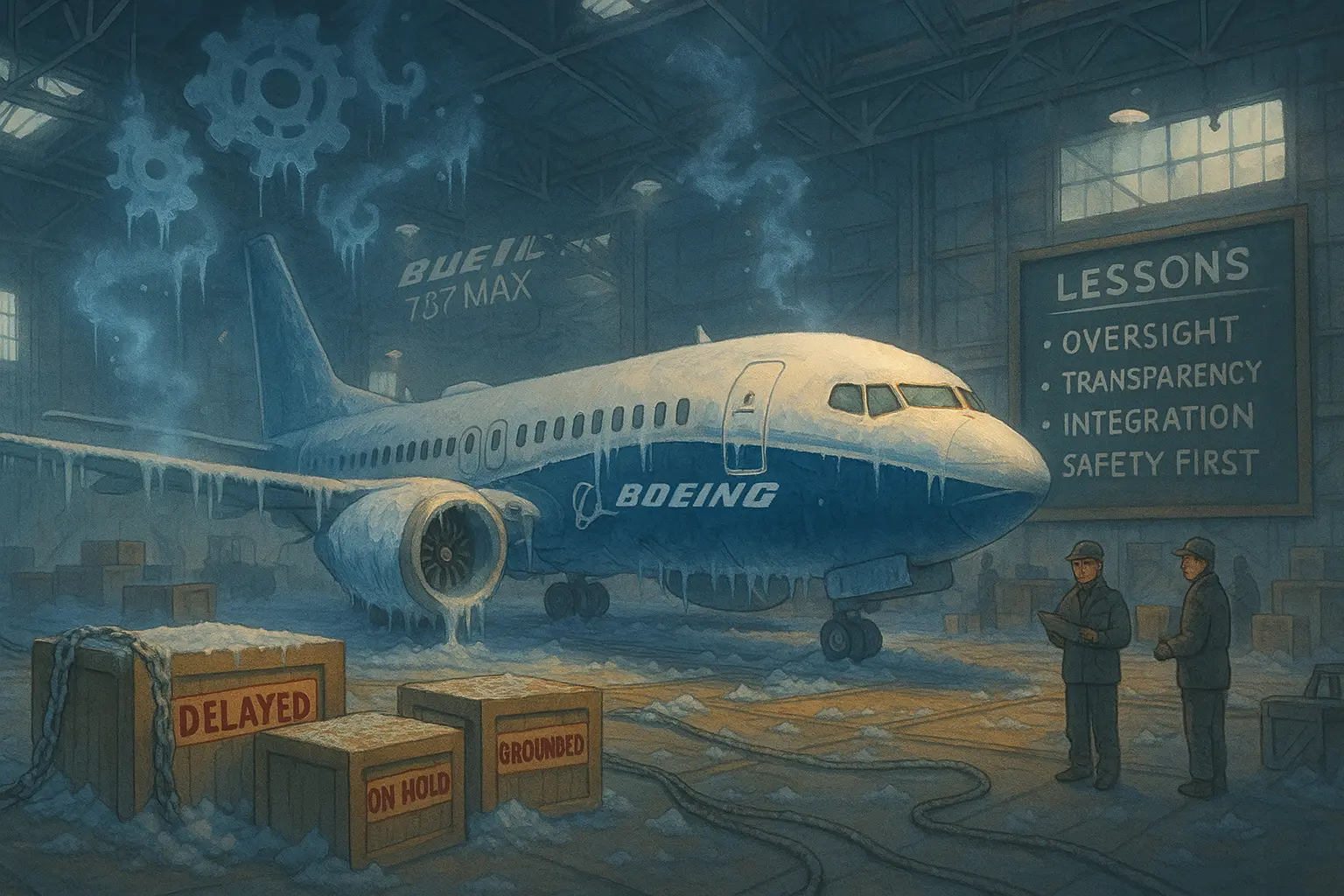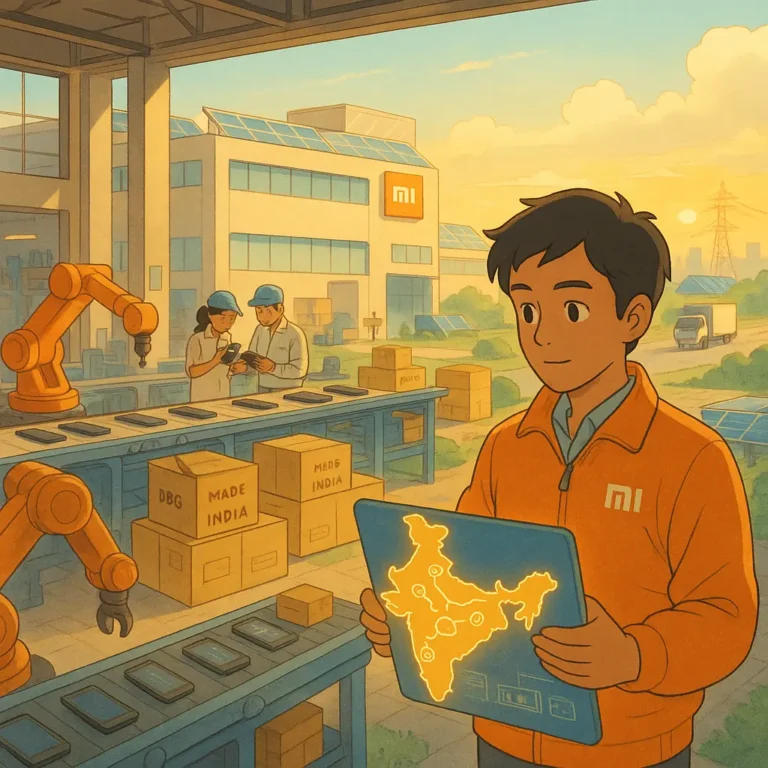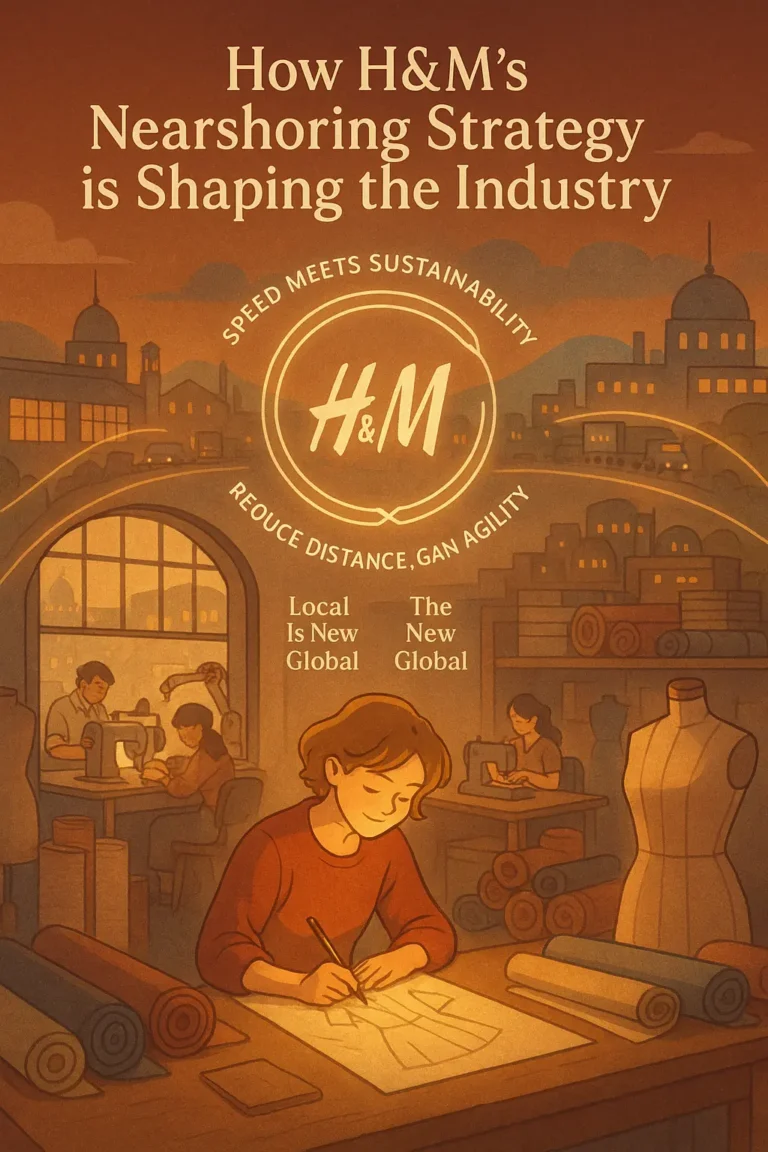
737 max supply chain freeze
Most supply chain professionals are trained to plan for demand swings, not production halts driven by regulatory failure. After 2019, Boeing’s 737 MAX supply chain freeze changed that.
The supply chain freeze was a disaster that could have been prevented multiple times. So why wasn’t it? And why was a $175 billion company caught in such a mistake?
Article Brief & Key Nuggets
- The Boeing 737 MAX supply chain freeze wasn’t just about planes—it exposed deeper flaws in supply chain decision-making.
- A safety failure triggered global regulatory action, but Boeing’s delay in halting production exacerbated the damage. Suppliers like Spirit AeroSystems faced sudden layoffs and revenue hits as orders stopped overnight.
- Boeing’s response came late: production was halted, restarted slowly, and only stabilized after major restructuring and supplier buybacks.
- For African supply chains—and others worldwide—this is a clear warning. Resilience, diversified sourcing, and real-time communication are no longer optional—they’re core to survival.
Boeing 737 MAX Supply Chain Freeze: An Avoidable Chain Reaction
Following two fatal crashes involving its best-selling 737 MAX aircraft (Lion Air in October 2018 and Ethiopian in March 2019) that killed 346 people, Boeing faced an unprecedented crisis.
Regulators grounded the jet in March 2019. However, Boeing kept the assembly lines moving at a reduced pace (from 52 to 42 airplanes per month), although it placed almost all the pressure on its suppliers.
Despite efforts to keep the assembly lines moving, the grounding of the 737 MAX triggered an unprecedented crisis. Airlines began canceling or deferring orders, which threw Boeing’s global supply chain into disarray.
The grounding of Boeing’s 737 MAX eventually culminated in the January 2020 “supply chain freeze,” when Boeing suspended production. At the time, the move was the largest assembly-line halt in 20 years.
And then a wave of financial and supply chain crisis followed.
Suppliers like Spirit AeroSystems, CFM, and Honeywell faced a classic bullwhip effect: production dropped to zero within weeks, then restarted slowly after nearly a year at reduced rates.
The supply chain freeze was not solely caused by regulatory actions—it was a result of leadership decisions that failed to heed the early signals. By the time Boeing finally stopped building the aircraft, suppliers were already overstretched, overstocked, and overwhelmed.
Read more: How Tesla and Panasonic’s Partnership Reduced Battery Prices.
What Triggered Boeing’s 737 MAX Supply Chain Freeze?
Boeing’s top management chose speed over safety. They believed the 737 MAX was key to their commercial growth. Even after the aircraft was grounded globally, executives reassured shareholders that production would only slow slightly.
But the monthly output, which fell from 52 to 42 jets, was far above what the grounded fleet could absorb.m Yet, Boeing kept sending orders to suppliers. Spirit AeroSystems, which produces the fuselage and key sections, staffed up to build 125 shipsets for the year.
But the planes weren’t delivered.
Boeing parked completed aircraft in storage facilities, which ultimately led to an inventory balloon. By late 2019, Boeing had no more room—physically or financially. In January 2020, the company froze all 737 MAX production. That was the trigger.
The supply chain crashed because suppliers had already invested months of capital and labor in parts that weren’t selling.
Supplier Fallout From Boeing’s 737 MAX Supply Chain Freeze
The most visible casualty was Spirit AeroSystems. The Wichita-based firm is Boeing’s largest supplier of the 737, building 70% of each jet. When Boeing pulled the plug, Spirit had nowhere to send its fuselages. It furloughed thousands of workers and slashed dividends.
Without new deliveries, Spirit was sitting on stockpiles of unpaid parts.
However, not all suppliers were terribly impacted.
Boeing’s diversified partners, such as CFM and Honeywell, performed better. Their customer base included Airbus. They sold spare parts and had longer financial runways. However, smaller firms reliant on a single program, such as the MAX, suffered harder and longer.
Some of these smaller suppliers, such as machine shops, materials processors, and avionics outfits, had built 16-week parts with no cash up front, expecting payments only after delivery. But with deliveries paused, cash flow dried up.
Layoffs spread, and idle inventory sat rusting in yards. The production halt wasn’t just a factory issue—it was a financial crisis for the entire downstream supply chain.
Read more: Lessons From Boeing 787’s Outsourcing Woes.
Boeing’s Late Response—and the Cost of Delay
Boeing didn’t act soon enough. It wasn’t until May 2020 that production resumed at a reduced pace. Mechanics returned under new quality guidelines. Assembly line tasks were redesigned to prevent rushed work.
Boeing called it a new era of “100 percent quality.” But the damage was done.
The company had lost trust—not just with regulators and airlines, but also with its suppliers.
Some of them were built ahead of schedule based on Boeing’s forecasts. Others couldn’t fund production without new orders. Spirit Aerosystems, for example, needed to renegotiate credit terms to avoid violating its lending agreements.
Boeing tried to stabilize things. It paid some suppliers for stored inventory and told them to expect long lead times. Eventually, it began negotiating to acquire Spirit AeroSystems—an effort to regain control over its most critical supplier.
But rebuilding confidence took longer than rebuilding jets.
Lessons Every Supply Chain Should Learn From Boeing’s 737 MAX Supply Chain Freeze
This crisis wasn’t limited to the aerospace industry. It delivered hard truths for every global supply chain executive. Here’s what must change:
1. Relying on One Supplier for Critical Parts is a Gamble
If your production hinges on one firm—or one geography—you’re one delay away from collapse. Boeing’s 737 fuselages came almost entirely from Spirit. When Spirit stalled, so did the plane. Manufacturers relying on a single border crossing or port face similar risks.
The ability to dual-source, even on a small scale, is increasingly vital as supply chain volatility continues to rise.
2. Supply Chains Must be Ready to Stop, Not just Scale
Most supply planning focuses on how to grow fast. However, Boeing demonstrated that halting production—especially when cash is tight—can be just as perilous. Firms need slowdown playbooks.
A great example of this is the Caterpillar supply chain playbook, which can contract and expand at will. Contracts must allow for idle costs. Suppliers need clarity on whether to stop or hold.
3. Quality Beats Speed When Trust is on The Line
Boeing aimed to outpace Airbus by hitting aggressive production targets. But shortcuts in design and testing backfired. For any supply chain, delivering quickly without building safely can destroy credibility. When customers stop trusting your product, no discount or rebate will fix it.
4. Pay Attention to Regulatory Pressure
Most companies treat regulation as external noise. But for Boeing, the FAA wasn’t just a regulator—it was the customer gatekeeper. Once it lost confidence in Boeing’s self-certification, production came to a halt.
Any supply chain exposed to customs, health authorities, or licensing bodies must treat compliance as a shared responsibility, not a checklist item.
5. Build Cash Cushions for Your Suppliers
When Boeing paused production, some suppliers struggled to survive the resulting gap. It later paid for some work-in-progress, but only selectively.
In high-dependency relationships, supply chains must consider emergency funding, accelerated payments, or collaborative inventory management. If your key supplier goes bankrupt during the crisis, it’s your problem too.
Read more: How Chicken Republic’s Supply Chain is Dominating Nigeria’s Food Industry.
How African Supply Chains Can Apply These Lessons
Across various African industries, including logistics, mining, agribusiness, and automotive, the same fragilities persist. And the lessons from Boeing’s 737 supply chain freeze carry weight.
- Avoid overdependence: Whether it’s port operations, clearing agents, or telecom links, relying on a single node can disrupt operations. Create fallback routes and alternate partnerships.
- Plan for the pause: Whether a strike, currency block, or customs delay, stoppages happen. Build “what if we freeze tomorrow?” protocols into your planning cycle.
- Standardize for quality, not just output: From regional trucking fleets to pharma distribution, fast doesn’t mean better. Process reliability must come before speed.
- Integrate regulatory foresight: Don’t wait for inspections to find problems. Whether it’s SONCAP in Nigeria or port health in Mombasa, engage early. Share inspection readiness down your chain.
- Support your weakest links: In most African supply chains, tier-2 and tier-3 suppliers are informal and undercapitalized. Build shared finance tools. Prepay when needed. Don’t let a small shop’s failure disrupt your container exports.
Final Word: Prevention Is Cheaper Than a Supply Chain Freeze
The Boeing 737 MAX production halt was a warning. The damage wasn’t just in dollars—it was in lost consumer trust, broken supplier relationships, and years of recovery work.
Every logistics leader—whether in Nairobi, Lagos, Cape Town, or Cairo—needs to walk away with this: supply chain resilience isn’t an aspiration. It’s a discipline. Don’t wait for a crisis to start managing for risk.
- Build systems that can stop safely.
- Communicate early, fully, and often.
- Design contracts that absorb shocks.
Most importantly, respect your suppliers enough to plan for their survival, not just your delivery.
Do you want more supply chain stories like this?
Subscribe here: https://supplychainnuggets.substack.com/

Obinabo Tochukwu Tabansi is a supply chain digital writer (Content writer & Ghostwriter) helping professionals and business owners across Africa learn from real-world supply chain wins and setbacks and apply proven strategies to their own operations. He also crafts social content for logistics and supply chain companies, turning their solutions and insights into engaging posts that drive visibility and trust.







